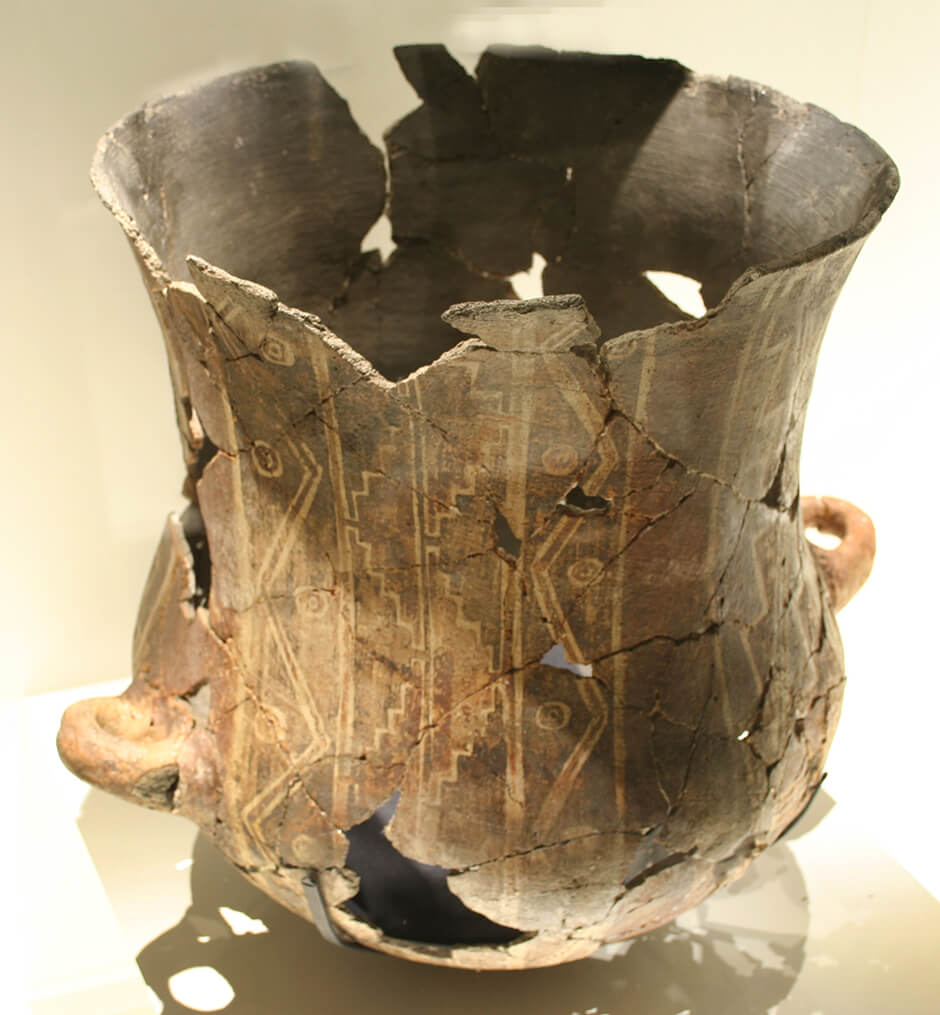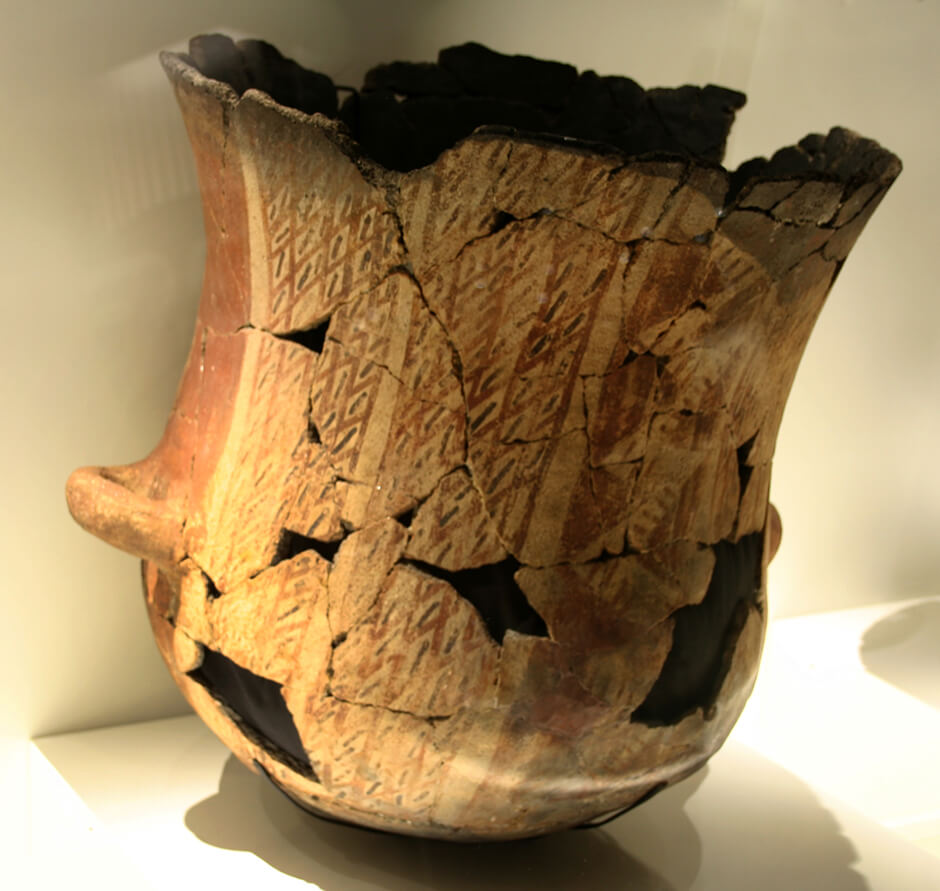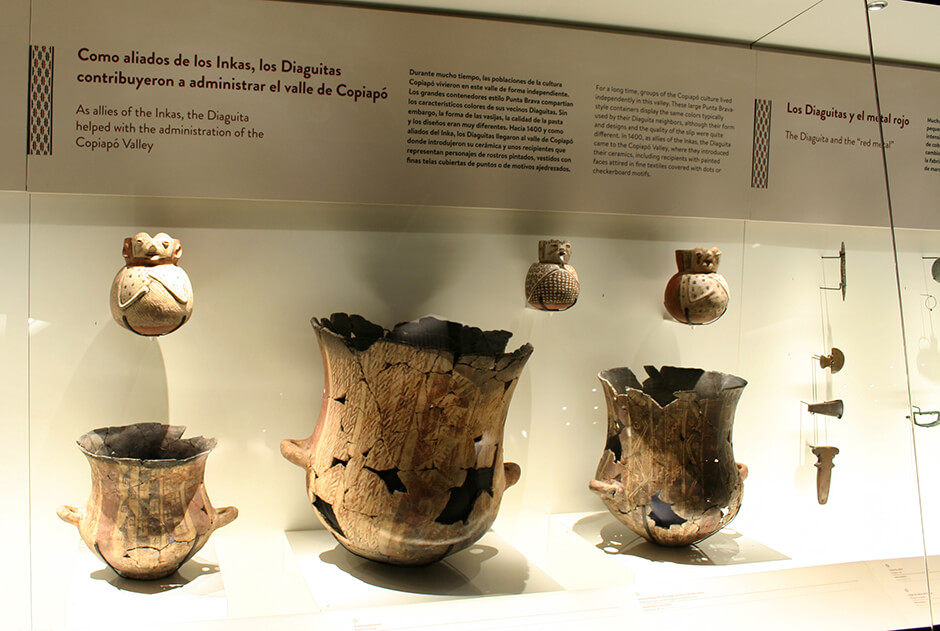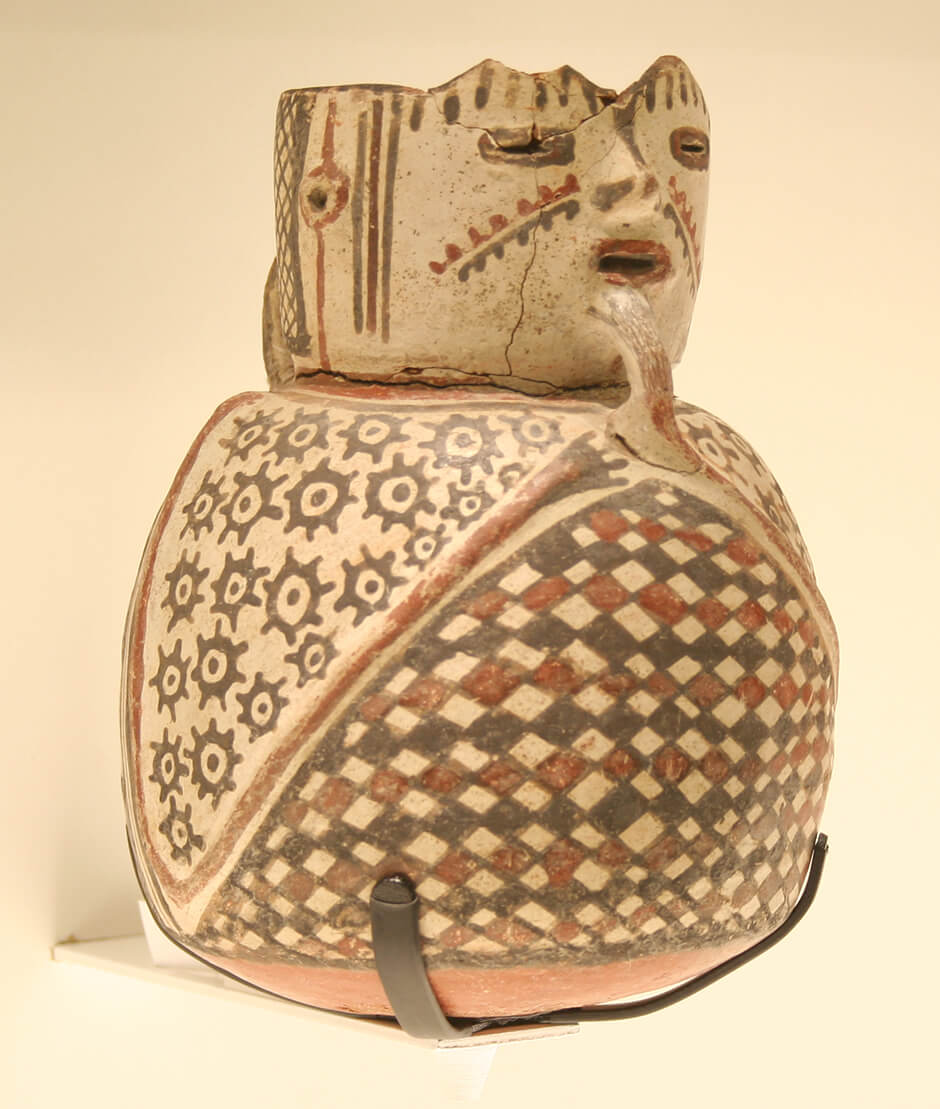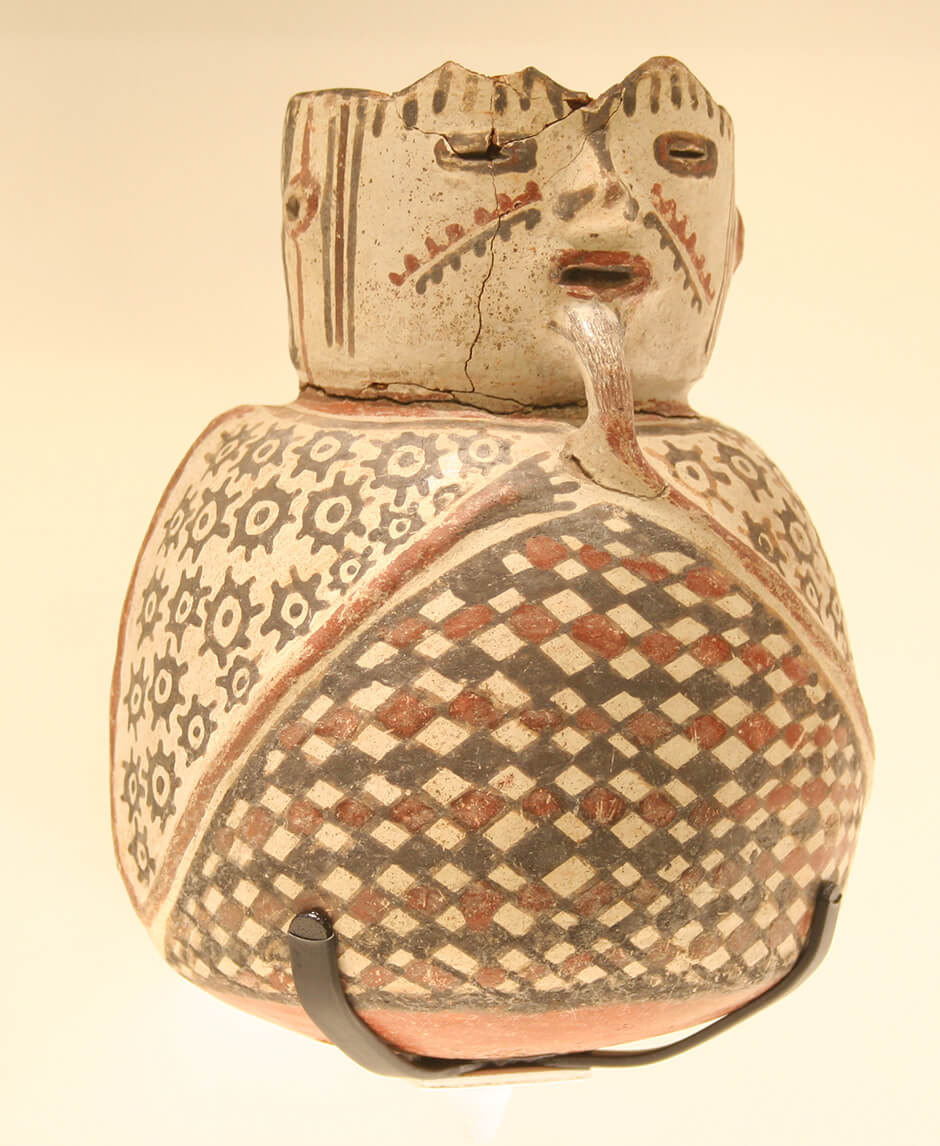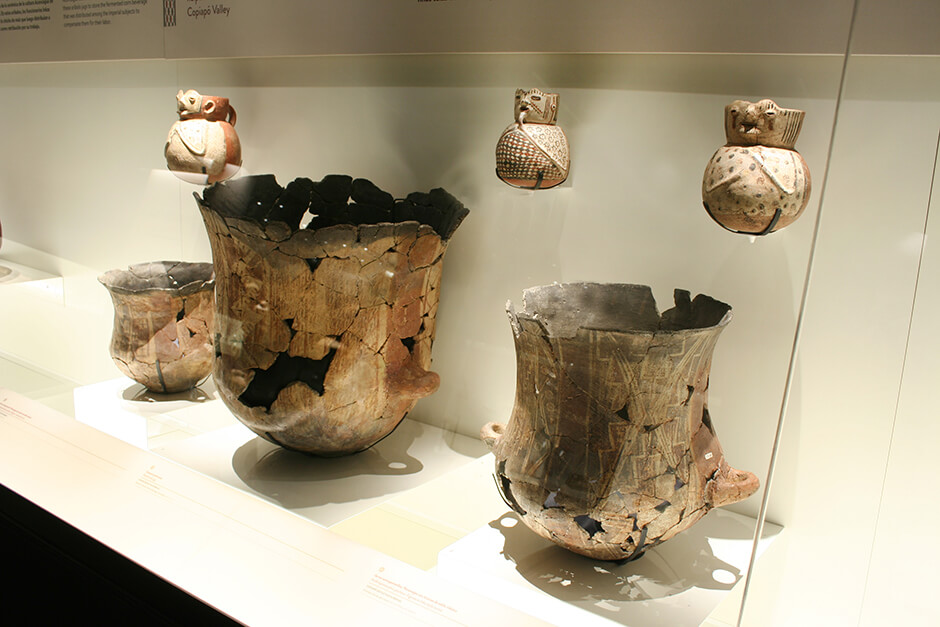The art of being Diaguita
- A little history
- Chino Dances
- Ways of “being Diaguita before the Inka period
- The origins of Diaguita art and culture can be found in Las Ánimas
- Several ceramic styles coexisted in the Norte Chico, representing different modes of “being Diaguita”. One of these was the Fourth Style.
- Like many pre-Hispanic peoples, the Diaguita felt a need to represent themselves in their ceramics
- Color was not the only way in which the Diaguita expressed their identity
- Diaguita ceramics exhibiting bird, feline and reptile faces
- Diaguita tricolor vessels and their shamanic geometries
- Identities in transformation
- The textiles of the Angualasto culture give us an idea of how their Chilean contemporaries, the Diaguita, dressed.
- Objects found in graves prove that Diaguita identity transcended death
- The Diaguita also had fertility cults
- Sounds and melodies accompanied Diaguita ceremonies and rituals
- Shamanic trance played a central role in “being Diaguita”
- By consuming hallucinogenic substances, certain individuals acquired the identity and powers of their guardian animals
- Ways of “being Diaguita” in Inka times
- After the Inka conquest, the Diaguita modified some elements of their culture
- The Diaguita served as agents of the Empire during the Inka expansion into Chile’s Central Valley
- As allies of the Inkas, the Diaguita helped with the administration of the Copiapó Valley
- The Diaguita and the “red metal”
- The Diaguita’s emblematic stone fascinated the Inkas
- The Norte Chico today: Diaguita, in their own way
- Epilogue
- Créditos
As allies of the Inkas, the Diaguita helped with the administration of the Copiapó Valley
For a long time, groups of the Copiapó culture lived independently in this valley. These large Punta Brava-style containers display the same colors typically used by their Diaguita neighbors, although their form and designs and the quality of the slip were quite different. In 1400, as allies of the Inkas, the Diaguita came to the Copiapó Valley, where they introduced their ceramics, including recipients with painted faces attired in fine textiles covered with dots or checkerboard motifs.





































